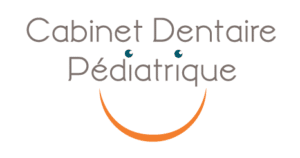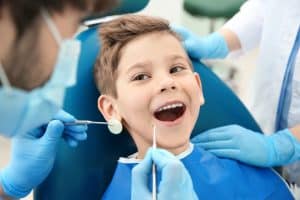Toothache, severe pain, fever, trauma, etc. Identifying the signs of a dental emergency in children allows you to react quickly.
This article guides you in assessing the severity of the situation and adopting the right reflexes or gestures that provide relief.
Dental emergencies in children: possibilities
Dental emergencies in children generally include any situation that requires stopping oral bleeding, relieving severe pain or repairing a damaged tooth.
The following is a list of some situations that may constitute a dental emergency in children and require consultation with a specialist:
Dental trauma
Dental trauma often results from falls or shocks that affect the mouth area.
In the case that a child has lost or broken a baby tooth, rinse their mouth with lukewarm water, and apply cold to the sore area.
In the event that the trauma occurred to a permanent tooth, look for the tooth pieces or the fallen tooth. If preserved in milk or saline, the tooth can be repaired or replaced by the pedodontist within hours of the trauma.
After experiencing physical trauma, it's also possible for a tooth to change color to a grey or pink tint.
This means that the trauma has affected the tooth's vitality.
Severe pain
If your child complains about bad pain in or around the teeth, mouth, or jaws, this can indicate a dental emergency.
Start by washing the sore area by having your child rinse their mouth with lukewarm water. Then wash the teeth thoroughly, flossing if necessary. Contact a practitioner before giving your child medication.
These pains can be caused by:
- Cavities
- Canker sores
- An abscess
- Teething
- Gum Inflammation
- A dental infection.
Mouth Wounds
The child may have cuts and bites in the mouth:
- Language
- Lips
- Cheeks
- Gums
- Etc.
In this case, apply ice, then a compress to stop any bleeding. If bleeding persists for more than 15 minutes, you need to seek emergency care.
With adolescents and preadolescents, wounds can arise from broken dental apparatus. If possible, attempt to remove the apparatus.
If not, place a cotton ball, orthodontic wax, chewing gum, or a compress on the broken part.
Recognizing Dental Emergencies In Babies
Baby teeth generally make their first appearance between 6 months - 1 year of age. Baby dental emergencies are rare enough, but still occur.
In babies, it is even more complicated to detect the origin of the problem than in children. Since they cannot express the pain, it is up to the parents to monitor the symptoms of a possible oral problem.
The main dental problems of babies are delayed teething or "early childhood caries".
These are so named because the sugar in milk damages the enamel of milk teeth when the teeth are not cleaned after each meal.
If you detect symptoms of cavities or those usually attributed to teething (fever, drooling, decreased eating and sleeping, crying, swollen gums, etc.) persist beyond reason, consider calling a pedodontist.
When should I call the dentist for a dental emergency in children?
If your child is complaining about pain, or if your child displays the symptoms of dental emergency, you need to call a pediatric dentist.
And this true even if you are unable to identify the exact cause of your child’s condition.
Dental emergency for children in Paris: think of Dr Agachi
Dr. Agachi’s office treats all types of children’s dental emergencies in her Paris office. If unsure, don’t hesitate to call. Our team will take the time to answer your questions regarding your child’s symptoms.
We’ll also advise you on the best steps to take and what medications you can, or cannot, administer while awaiting your dental visit.
According to the level of urgence, your child's visit will be scheduled as early as possible at our Paris office.


